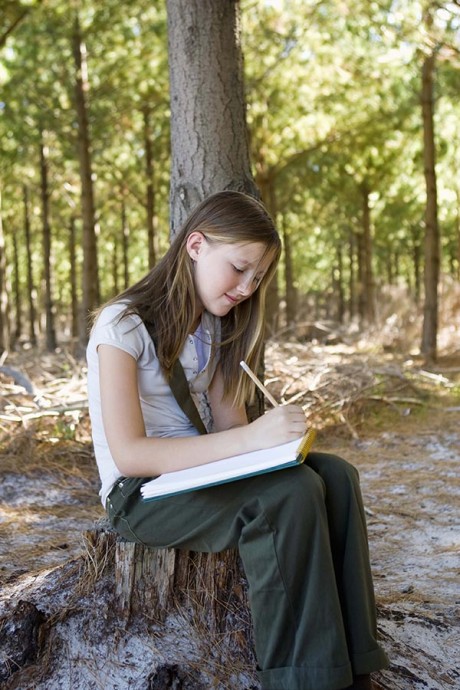Outdoor fun
Journaling helps kids explore nature
By Debbie StringerMy only memory of kindergarten involves a disastrous trip to the zoo. While my classmates teased the chimps, I zeroed in on a dead blue jay on the sidewalk. I scooped up the bird and stuffed it down my jumper. I wanted a closer look at those brilliant feathers.
Back in the classroom, my plan fell apart when the teacher noticed the feathers poking from my dress. She shrieked as I pulled out the decaying carcass, then she launched a tirade. I felt humiliated. Worse, I lost my treasured bird.
There’s a more sanitary way for kids to connect with nature. A personal nature journal is a fun and educational way to record, with notes and sketches, the things kids see in the natural world.
Not only is making a journal fun for any age and skill level, there are lessons to be learned, from writing to science to art. Nature journaling engages all the senses and the imagination. It helps children slow down and focus while stimulating their curiosity.
Maybe most important, it gets nature-deprived kids outdoors and away from electronic diversions.
In nature, a child finds freedom, fantasy and privacy: a place distant from the adult world, a separate peace,” writes Richard Louv in his best-selling book “Last Child in the Woods.”
A personal journal can help a youngster discover this refuge. Basic journal-making supplies cost very little. All a child needs is a spiral notebook, a sketchbook or a blank journal, plus some pencils, crayons, colored pencils or markers. A cheap set of watercolors works great, too.
An optional accessory: a field guide to local trees, wildflowers, insects, birds, reptiles or amphibians.
The backyard is a fine place to begin. Kids should decide for themselves what they want to put in their journal, but they may need suggestions. Here are some ideas:
Make lists.
What do you see that flies or crawls? What do you see that’s yellow? Red? What do you hear? How many petals does a daffodil have? How many different leaf shapes can you find?
Make notes about animals, birds and insects.
What are they eating? Where did you find them? See any animal tracks? If you see baby birds or animals, how are their parents caring for them? Draw feathers you find and try to match them to birds.
Draw a map of your yard.
Include the house, trees, paths, rocks and gardens. Mark the locations of cool things you find, maybe a turtle or cocoon or bird nest.
Go outside at night.
Listen and look for nocturnal creatures such as owls, raccoons, geckos, moths, bugs and bats. Draw the moon phase and record the date.
About the Author
Debbie Stringer is editor of Today in Mississippi, the official publication for Mississippi’s electric power cooperatives.-
Share this story:


